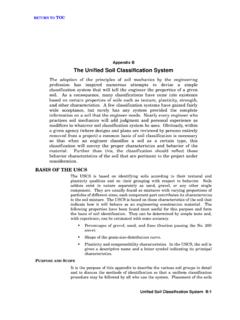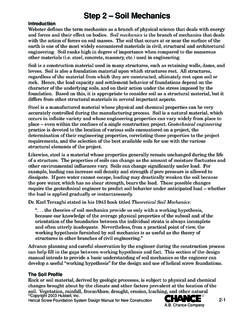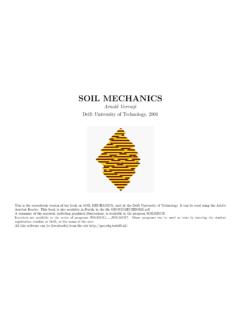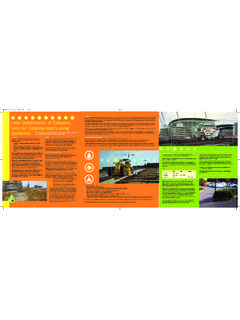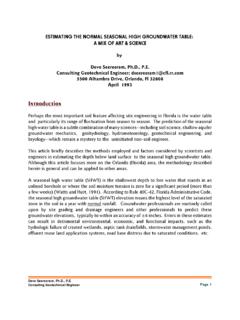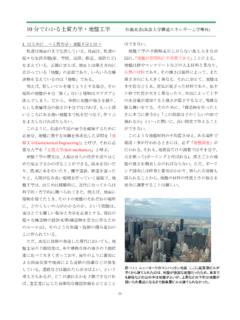Transcription of CONTINUING EDUCATION UNIT Tree Risk …
1 The art and science oftree risk assessmentcontinues to evolve as we increase our knowl-edge base and with field experience. Treesdo not fail at random. tree failures are pre-dictable over a broad time range. And treeassessment is not an exact science but ascience nonetheless and one that is constantlyadvancing. An arborist performing tree risk assess-ments must be well trained in biology, treestructure, and tree mechanics. The arboristshould possess a high level of comfort andexperience with the inspection process.
2 Ittakes a trained eye to recognize the subtlesigns of impending mechanical failure. Thepossible result of over-reading these signs isoverreacting. Any existing signs of failuremust be thoroughly evaluated to determinecause. Because every tree is different, perform-ing tree risk assessments is a learning article briefly reviews structural defectsand basic tree process for evaluating the risk oftree failure begins with visual inspection fordefects (visual tree assessment, VTA), followedby sounding for suspected decay and prob-ing, if necessary, with a portable drill, incre-ment borer, or an advanced decay detectiondevice.
3 Formulating a decision involvesconsidering several factors, including multi-ple defects, species characteristics, locationand extent of decay, characteristics of decayorganisms, crown size, crown ratio, stemtaper, exposure, target considerations, treevalue, and owner EDUCATION UNITDECEMBER of RiskAssessmentThe three components of tree risk assessmentproposed by Matheny and Clark (1994) arethe tree s failure potential, an environmentconducive to tree failure, and a PotentialAlthough some trees without defects fail inmajor storms, the presence of any defect willincrease the chances of failure.
4 Each specieshas its own profile of defects. Some factorsthat must be considered include the species growth habit, tree condition, branch attach-ments, resis-tance todecay, condi-tion ofanchoringroots, cul-tural ormaintenancehistory, andpreviousdamage. In addition, the severity of anydefects found should be considered. Otherfactors related to the site such as intensity ofuse, soil condition, and prevailing windsmust be considered in conjunction with thedefects present when assessing the potentialfor failure.
5 Any individual factor can directlyimpact tree safety (or, more often, multiplefactors impact the tree s failure potential). Thesize of the tree or tree part that may fail is alsoimportant. Usually, the tallest, most exposedtree and tree parts are of greatest concern. Environment Conducive to FailureA weakened tree that is exposed to additionalloads from wind, ice, or other factors obviouslywill have an increased likelihood of failure,especially if the load is unusual in directionor magnitude. Most tree failures occur duringor as the result of storms, and exposure torain, snow and ice loading, and lightningincreases risk of branch and tree site factors and past history can influ-ence tree condition and the types and sever-ity of the defects present.
6 Some examples of stress factors and theinjuries or defects they can cause are listedin Table objectives The arborist will be able tohexplain the components of tree categories of guidelines for evaluating decayabove and below some basic principles of Risk Assessment& tree Mechanics000000000000By Ed HayesTable 1. Stress factors and the injuries or defects they can FactorResulting Injury or DefectSoil compaction, paving, and grade changes Dieback and deadwoodConstruction injury to stem and rootsCankers, decay, cracks, leaning,and windthrowWounds, flush cuts, cavity fillings, and Cankers, decay, and cracksother mistreatments Planting too deeply Dieback, deadwood, stem-girdlingroots, and windthrow NEWST argetTheoretically, without a target there is nohazard.
7 However, in urban settings, we rarelycan completely discount target include facilities, people, and personalproperty. In various tree -rating approaches,targets may be prioritized by intensity ofuse or exposure to andDocumentationInspecting trees for defects must be a carefuland systematic process. The entire tree mustbe inspected. Inspections should be doneonce a year and following storm are best conducted during theleaf-off season for temperate climate hard-wood species to facilitate observation andinspection.
8 Always document the evalua-tions, recommended actions, and actionstaken. Keep permanent DefectsIdentification and correction of structuraldefects such as weak branch attachments,leaning, cracks, wounds, deadwood, anddecay may reduce the failure potential (and,therefore, reduce risk to property and injuryto people). Branch Attachments andBranch FailuresWeak branch attachments include unionswith included bark and branches formedfrom epicormic buds. A weak union withincluded bark has bark present inside thebranch union.
9 There is little wood tissueattachment between the codominant stemsor branch union with included bark. Weakunions are common in species with an oppo-site bud set. Examples include maple (Acer)and ash (Fraxinus)species. Weak unions areoften easy to evaluate. Weak unions withopen cracks or decay are obvious propagating rib on opposite sides ofthe weak union can be an indicator of aninternal crack and, in some cases, decay. When trees are topped, overpruned, orstressed, they produce epicormic from epicormic buds are weaklyattached, especially if there is internal decaybelow the attachment, which is often thecase below old topping cuts.
10 Weak unionsare one of the most common causes of branchand stem failures during storm events andone of the easiest defects to prevent. Guide-lines call for subordination or removal of allcompeting leaders beginning the secondyear after planting. This practice shouldcontinue over several years to produce onecentral TreesMost trees lean to some extent. Phototropism(growing toward light) can cause a naturallean, which may or may not be a problemin later years. The key question is, is the leannatural or is the tree failing?
